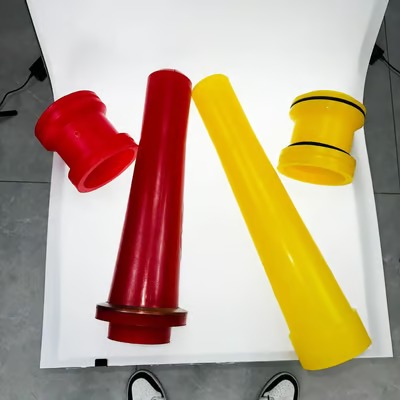Introduction
A polyurethane hydrocyclone is a widely used device in the field of particle separation. It offers several advantages over traditional methods and has become a popular choice for various industries. In this article, we will explore the different aspects of polyurethane hydrocyclones and how they contribute to efficient particle separation.
1. What is a Polyurethane Hydrocyclone?
A polyurethane hydrocyclone is a device used for particle separation based on density and size. It consists of a cylindrical chamber with an inlet and an outlet. As the slurry enters the chamber, it spirals downward and undergoes centrifugal force, causing the denser particles to move towards the outer wall and the lighter particles to move towards the center.
2. Advantages of Polyurethane Material
Polyurethane is the preferred material for hydrocyclones due to its excellent wear resistance and chemical stability. It can withstand high pressures and abrasive environments, making it ideal for particle separation applications. Additionally, polyurethane hydrocyclones are lightweight, which simplifies installation and maintenance.
3. Efficient Particle Separation
Polyurethane hydrocyclones are designed to achieve efficient particle separation by optimizing their geometry and operating parameters. The size and shape of the hydrocyclone, as well as the flow rate and pressure, play crucial roles in determining the separation efficiency. By adjusting these parameters, it is possible to achieve a high degree of particle separation.
4. Wide Range of Applications of Using a Polyurethane Hydrocyclone
Polyurethane hydrocyclones find applications in various industries, including mineral processing, oil and gas, chemical, and environmental engineering. They are used for separating solid particles from liquids or classifying particles based on size. The ability to handle different types of particles makes them versatile and adaptable to different industrial processes.
5. Enhanced Slurry Handling of Using a Polyurethane Hydrocyclone
Polyurethane hydrocyclones are capable of handling high volumes of slurry, making them suitable for large-scale operations. The efficient separation of particles allows for better control of the slurry's composition, leading to improved downstream processes. This enhanced slurry handling capability helps optimize overall process efficiency and reduce costs.
6. Low Maintenance Requirements
Polyurethane hydrocyclones have minimal maintenance requirements, thanks to their durable and wear-resistant properties. They are less susceptible to damage from abrasive particles compared to other materials. This results in longer service life and less downtime for maintenance, making them a cost-effective option for particle separation.
7. Environmental Benefits of Using a Polyurethane Hydrocyclone
Polyurethane hydrocyclones contribute to environmental sustainability by reducing the amount of water and energy required for particle separation processes. Their high separation efficiency means that less water is needed to achieve the desired results. Additionally, their lightweight construction reduces energy consumption during transportation and installation.
8. Customization Options
Polyurethane hydrocyclones can be customized to meet specific process requirements. Manufacturers can tailor the design and dimensions to optimize separation efficiency for different particle sizes and types. This flexibility allows for better control and performance in various applications, ensuring maximum productivity and cost-effectiveness.
9. Comparative Analysis with Other Methods
Compared to other particle separation methods, such as sedimentation, filtration, and centrifugation, polyurethane hydrocyclones offer several advantages. They have a smaller footprint, require less maintenance, and can handle a wider range of particle sizes. Additionally, they provide a more cost-effective solution for particle separation in many industrial processes.
10. Future Developments and Research
Ongoing research and development in the field of polyurethane hydrocyclones aim to further enhance their performance and efficiency. Advances in material science and computational modeling techniques are contributing to the optimization of hydrocyclone designs and operating parameters. These developments will continue to drive the adoption of polyurethane hydrocyclones for particle separation in various industries.

